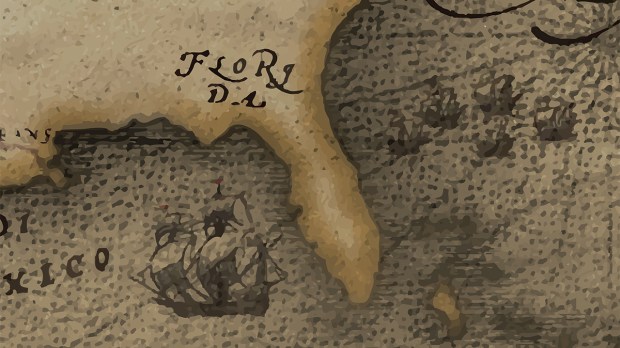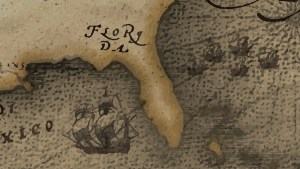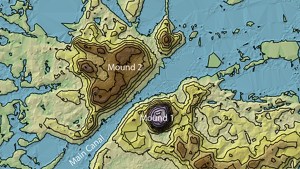Fray Luis De Cáncer is perhaps better known known as Fray Luis de Barbastro. Born in Barbastro (Aragón, Spain), he was the first Dominican to be made prior of San Juan, Puerto Rico, and one of the Martyrs of Florida. A disciple of the famed Dominican jurist, philosopher, theologian, and chronicler Fray Bartolomé de Las Casas, De Cáncer arrived in the Caribbean around the year 1517 and, after working in the area for a while, ventured onto the mainland, achieving some missionary success in México and Guatemala. From there, he proposed to go on a mission to Florida.
By then, the Floridian peninsula had already been explored and ravaged by Hernando de Soto, the first European to cross the Mississippi river. In fact, he and Cabeza de Vaca were the first Europeans to ever venture deep into what is today the territory of the United States: De Soto crossed Florida, Georgia, Alabama, Mississippi, and most likely Arkansas. Cabeza de Vaca crossed what is today’s New Mexico, most of Texas, and reached the tip of the Floridian Peninsula.
After De Soto’s expedition, native Floridians were reasonably hostile to the Spanish. As expected from a disciple of Las Casas, Fr. Luis argued that further violence would never bring about the Peninsula’s conversion to Catholicism. In order to avoid further clashes with the natives, Gene M. Burnett explains in his Florida’s Past, King Charles V approved De Cáncer’s Florida mission, yet making it clear that he should travel to the upper east coast, avoiding the southern territories that earlier conquistadores attacked in the Gulf Coast.
Cáncer recruited four more Dominican friars (three priests and a brother) and reached Havana in 1549, where they took a Florida native convert, Magdalena, to be their interpreter. They then left for Florida on a caravel captained by Juan de Arena who, despite all the warnings to avoid the Gulf Coast and the royal demands imposed by the Spanish crown on the expedition, took them to an area south of Tampa Bay, a few miles away from where previous, violent expeditions had landed.
As they got there, they encountered a group of natives who told them about the numerous Tocobaga villages around Tampa Bay. The expedition split and a priest, a brother, a sailor, and Magdalena joined the natives and walked all the way to their village. Fray Luis De Cáncer returned to the ship and sailed away to meet them later at the bay.
Burnett’s book compiles some early chronicles of De Cáncer’s expedition. According to those registers, De Cáncer reached Tampa Bay on June 23, 1549. Only Magdalena and a group of Floridians greeted him. Neither the Dominicans nor the sailor who joined them were with them.
Magdalena told Fray Luis that she had managed to convince the Tocobaga that the friars were peaceful, and that they were now their guests. When Fray Luis and his companions returned to the ship that evening, they found a sailor who had been enslaved by the Tocobaga years before, and had managed to escape. The sailor told Fray Luis that the Floridians had killed the two friars and enslaved the sailor.
Fray Luis’ companions wanted to set sail for the east coast of Florida immediately, fleeing the understsandably hostile Tocobaga. According to the chronicles, the friar refused to leave a land that was “hallowed by the blood” of his brothers.
The next day, he rowed with two other friars to shore, where they saw a group of Tocobaga. Fray Luis jumped off the boat, waded to the beach and then kneeled and prayed for a while. When he arose, the Floridians took him and beat him to death. He is now considered one of the proto-martyrs of Florida.



